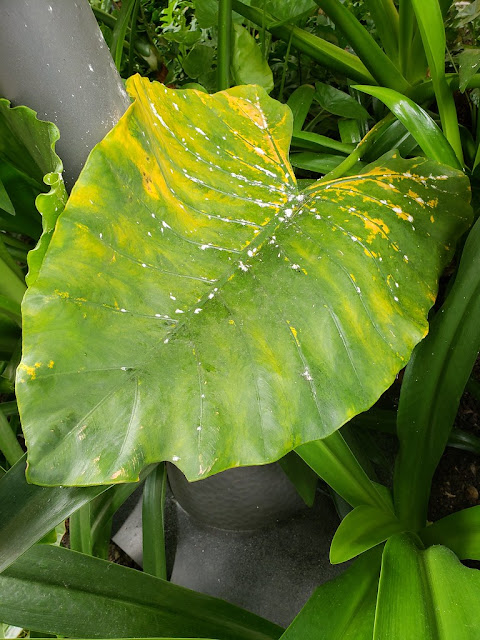How To Grow And Care For The Large Tropical Elephant Ear Plant
The Elephant Ear Plant is a delightful tropical plant that many wish to use in their garden because they give an air of sophistication and a rain forest look to even the most northern of gardens.
They earn their name by having Humongous Leaves and a height of 3 to 5 feet. For the most part, they are a hardy little plant that is typically quite easy to grow.
The best time to procure this plant is in the winter after the leaves have died.
At that point, you can dig up the ear bulbs and place them in an area that is cool and dark until spring. This step is recommended, even once you begin growing your plants unless you live in a warmer climate.
Plant elephant ears
If you enjoy warm weather or even semi-warm weather all year round, you can simply leave the plants in the ground during winter.
Simply cover them with plenty of mulch to cover the possibilities of a cool spell ruining the bulb.
Once spring arrives, you are ready to plant your ear bulbs. Take care in determining the soil location. Plant it in a spot that allows them plenty of sunshine and access to natural heat. Additionally, the soil should border on wet for these plants.
Don’t allow the soil to get too wet, however. Even the moisture-loving elephant ear plants need to have adequate drainage systems. A mulching system will help the plants keep the moisture they need.
Your soil does not have to be amended soil but should be an organic blend. This variety of plant does best in soils that have been blended with compost and other organic matter.
Once autumn arrives, you’ll need to dig the plants back up and store them if you want the bulbs to survive the winter.
As you can probably tell, when you plant elephant ears plants do take more work than many other varieties of plants. However, the resulting slice of rainforest decoration that the plants will lend your garden will be worth it.
Problems When Gardening Plants Elephant Ear
One of the most discouraging things that can happen to a plant owner is finding that all of their hard work is going to go down the tubes because of pests or other unforeseen events.
The plant elephant ear is a lovely addition to any garden but unfortunately, they are susceptible to many variables that will result in the plant failing to thrive.
These include root rot, insect pests, and shock.
Root rot is a problem that affects many plants. As the name implies, it is a condition through which the roots of the plants die.
Though plants can survive many things, including insect attacks, poor lighting, and diseases of the leaves, root rot is an almost guaranteed killer. Though most common in household potted plants kept indoors, root rot can also affect plants grown outdoors.
The best way to treat root rot is to prevent your plants from contracting it in the first place. Plants get root rot because they have poor drainage systems.
Even though plants elephant ears love water and thrive in wet conditions, they still need adequate drainage, else they will succumb to root rot.
As far as insect problems go, the worst offenders for elephant ear plants are mealy bugs and aphids.
Of course, along with aphids come ants seeking to profit from the honey-like substance that aphids produce.
Getting rid of your insect pests can be time-consuming and difficult, particularly if you are choosing to not use insecticide.
For aphids, if they are caught early, a good dose of the hose turned on full blast is enough to get rid of them. For most other insect pests, soap can be used on the leaves.
The third problem is a shock. This occurs when you are transplanting it during their growing season before the leaves have died off. Plants that experience shock will result in yellow or shriveled up leaves.

Comments
Post a Comment